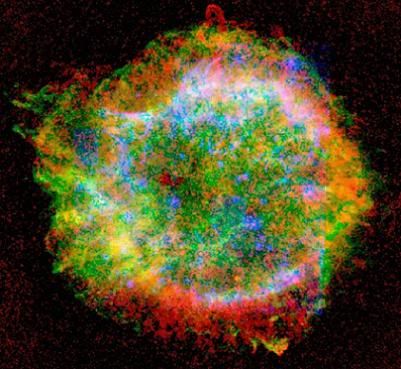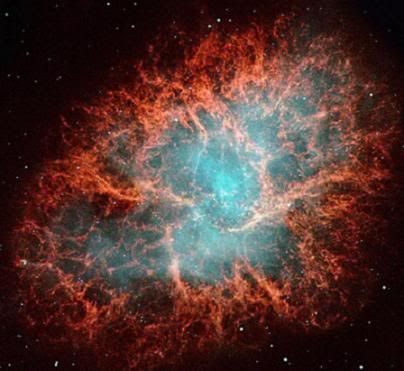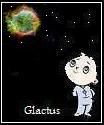Post by glactus on May 9, 2011 11:35:40 GMT

Cassiopeia A
Cassiopeia A (Cas A) is a supernova remnant in the constellation Cassiopeia and the brightest astronomical radio source in the sky. The supernova occurred approximately 11,000 light-years away in the Milky Way. The expanding cloud of material left over from the supernova is now approximately 10 light-years across. Despite its radio brilliance, however, it is extremely faint optically, and is only visible on long-exposure photographs.
It is believed that first light from the stellar explosion reached Earth approximately 300 years ago but there are no historical records of any sightings of the progenitor supernova, probably due to interstellar dust absorbing optical wavelength radiation before it reached Earth.
Possible explanations lean toward the idea that the source star was unusually massive and had previously ejected much of its outer layers. These outer layers would have cloaked the star and reabsorbed much of the light released as the inner star collapsed. Distance from Earth is 11,000 light years and magnitude fluctuates between 1.6 through to 3.0

The Crab nebula
M1, or, NGC 1952, The Crab nebula is a supernova remnant in the constellation of Taurus. The nebula was observed by John Bevis in 1731; it corresponds to a bright supernova recorded by Chinese and Arab astronomers in 1054. The Crab is generally the strongest persistent source in the sky, . Located at a distance of about 6,500 light years from Earth, the nebula has a diameter of 11 light years and expands at a rate of about 1,500 kilometers per second. Magnitude is 8.4
At the center of the nebula lies the Crab Pulsar, a neutron star 28 - 30 km across, which emits pulses of radiation from gamma rays to radio waves with a spin rate of 30.2 times per second. The nebula was the first astronomical object identified with a historical supernova explosion, and is also the first Messier Object, catalogued in 1758.
To see movie click on the URL below. Has sound.
www.youtube.com/watch?v=baJ43ByylbM&NR=1

Cassiopeia A
Credits:
Images: These are NASA images.
Text: Wikipedia/ Glactus


